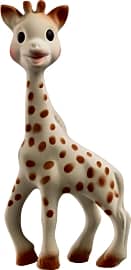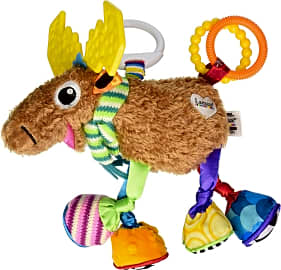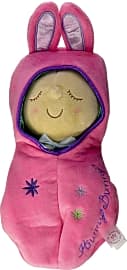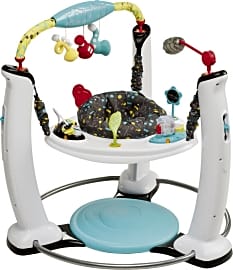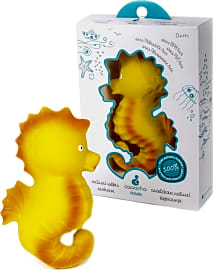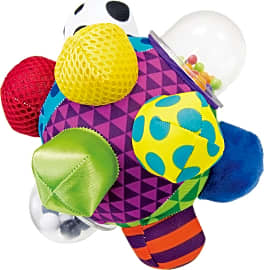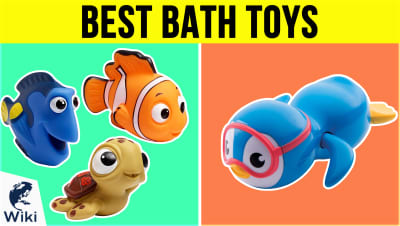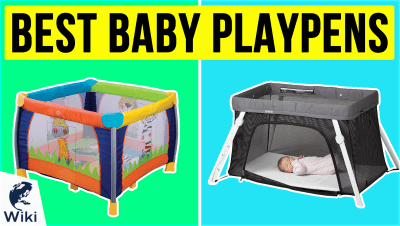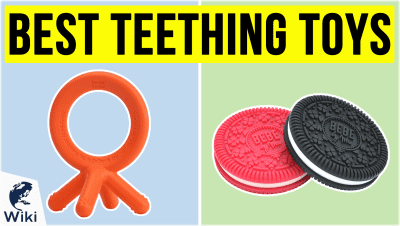The 10 Best Safe Baby Toys

This wiki has been updated 40 times since it was first published in May of 2015. You can stimulate your child's mind and body without the risk of any hazardous materials, if you use the safe baby toys from our list. We've included award-winning items that promote the development of balance and coordination, motor skills, logic, and color and shape recognition, ranked here by their developmental potential, durability, and likelihood of consistent engagement. When users buy our independently chosen editorial choices, we may earn commissions to help fund the Wiki.
Editor's Notes
June 22, 2020:
There are a lot of things that can go wrong with baby toys, making something that seems safe at first turn out to be not so safe. Now, it's important to stress that any baby toy is only as safe as a parent's involvement, so make sure you spend time with your child with each new toy they get to ensure they aren't the one child who — like a bear getting into a bear-proof food container — somehow figures out how to make a simple plaything into a deadly hazard.
Of course, there are some considerations that make it easy to eliminate certain toys from the running if you look hard enough. To use bath toys as an example, we got rid of the Simple Lines Bath Animals included previously and replaced them with Nalu The Seahorse. At first glance, Nalu seems like the less obvious choice with its rubber construction compared to the soft, spongy material of the Bath Animals. But that sponginess allows the animals to soak up water, and while they're built to dry quickly and resist mold, problems arose in the hands of babies who constantly put stuff in their mouths. If your kid has even a small accident in the bath and then puts a spongy toy to their mouth and sucks on it, you're in for a night's worth of tummy troubles at least.
We also sent off the Manhattan Toy Skwish Rattle because its little wooden knobs could become a source of splinters if they get damaged in any way, and we replaced that with the same company's Manhattan Original Winkel. The Winkel is much safer in that respect, but also offers something the Skwish doesn't: it can get cold enough in the refrigerator to help soothe aching gums during the teething process.
Special Honors
Anne-Claire Petit Mama Teddy This big, plush friend is unusual among teddy bears for boasting an extremely colorful crochet construction that gives her a handmade vintage feel. It's a little expensive, but it's also over a foot and a half tall, so your child will be able to grow up with her and call her their friend for many years. It's also available in solid colors, if you prefer, as well. anneclairepetit.com
How To Choose Safe Baby Toys
But a parent also wants their kids to take pleasure in every stage of life — indeed in the first few years of life, playtime directly equates to learning and development.
A parent's first and more important responsibility in life is to keep his or her children safe. But a parent also wants their kids to take pleasure in every stage of life — indeed in the first few years of life, playtime directly equates to learning and development. Thus it is that many parents embark on a search for baby toys that are both amusing and safe.
There are many factors to consider when evaluating a toy's safety, and a good first step is to remove the potential for one of the greatest hazards small children face: choking. As choking is one of the most common causes of childhood injury (or worse), a baby toy must present no chance for accidental ingestion. Infants and toddlers alike are wont to put things into their mouths; if an object is simply too large to fit in a mouth, that hazard has been mitigated.
Next, look for toys that are free of potentially harmful materials such as lead, BPA, phthalates, and other dangerous chemicals and compounds. Reading all labels and literature that accompany a toy should be enough to figure out whether or not the toy meets your standards, and be on the lookout for words like "organic" and "nontoxic." Also check the place of manufacture of a product and be aware of inexpensive imports, which may not be entirely trustworthy in their labeling.
When considering toys designed to be ridden atop or pushed by a walking baby or toddler, make sure they are stable and sturdy. A child's gross motor functions can be developed and improved thanks to a good walker-type toy, but injury can easily ensue if such a toy itself is unstable and prone to tipping over.
If you plan to give your child stuffed or plush objects, such as a teddy bear or a blanket, you should first make sure that the item is fully machine washable. Soft, porous toys can quickly absorb germs, chemicals, spilled liquids, and more and require periodic laundering to ensure that they stay clean and safe for close contact with young bodies.
One of the simplest and most reliable steps a parent (or other caregiver) can take in evaluating a potential toy's safety is to look for the ASTM seal of approval. The American Society for Testing and Materials is in fact an international organization that evaluates products based on rigorous safety standards; their approval of a product says much about its quality and reliability.
Creating A Safe Play Space
Establishing a safe place for children to play takes careful consideration, initial effort, and modest investment.
First and foremost, a child's play area must be clearly defined so you know that while within its boundaries, your child is safe even with only passive monitoring. That means blocking off stairs, hallways, and potentially sections of a room. You can use purpose built gates, furniture, and of course closed doors to facilitate this.
Use padding to soften the edges and angles of furniture and, when needed, simply move a given piece of furniture out of the area.
Next, you must account for all the obvious hazards in the play area, such as electrical outlets, into which covers must be inserted when not in use. Watch out for electrical cords as well, which can present multiple dangers at the same time, namely a strangulation hazard, a risk or shock should the cord be cut or torn (or bitten), as well as the chance for injury should a lamp or other object be pulled down atop a youngster. All electrical cords should be tucked out of the way and/or secured to the wall or floor. Also watch out for any other objects that could fall down onto a child — this includes heavy books.
Another obvious hazard to be confronted are sharp corners. These are present on desks, tables, chairs, and more and can lead to serious injuries. Use padding to soften the edges and angles of furniture and, when needed, simply move a given piece of furniture out of the area. Watch out for loose carpets, especially if they are set on hard flooring. Carpets can create a tripping hazard when an edge rolls up, and they can slide underfoot when on a smooth surface. You can use a high friction pad under the carpet to prevent it from bunching or sliding and to help absorb the impact if and when a child does topple over.
Recent Reasons Toy Safety Is A Real Concern
The parent on the lookout for the safest baby toys is no alarmist: the news cycles regularly feature stories of serious hazards presented even by mainstream toys one would think had been fully vetted prior to release. A bit of investigative work unveils the recurrence of toy safety issues.
All of these recalls occurred in a three month period -- as did dozens more.
Take even a cursory glance at the regularly updated reports from the United States Consumer Products Safety Commission and you'll see toy recalls occurring at least on a monthly basis, and sometimes weekly. The CSPC notes for example a building playlet that posed a choking hazard despite being designed by a manufacturer reputed for safe toys. The agency tracked baby costumes recalled due to strangulation hazards. And they alerted consumers of a child's toy recalled due to the risk of it catching fire. All of these recalls occurred in a three month period -- as did dozens more.
A vigilant parent therefore must take the time to research a toy carefully before its purchase, but should also check in with manufacturer and government agency reports periodically to make sure the toy is still considered safe after it has been in real world situations for an extended period of time. Infancy does not last long; it's well worth the time and effort to ensure that a young child is safe during this precious but occasionally fraught period of life.



